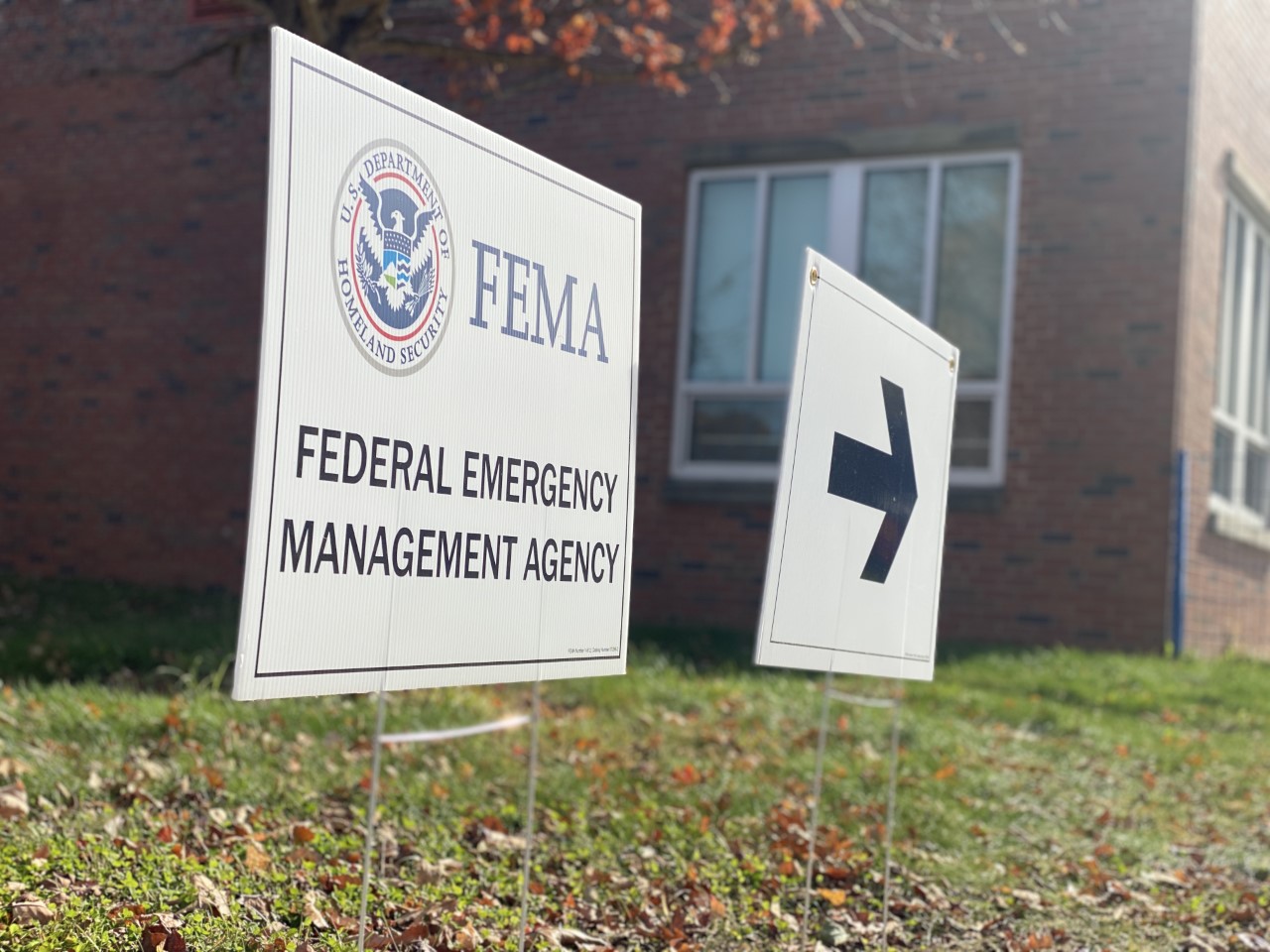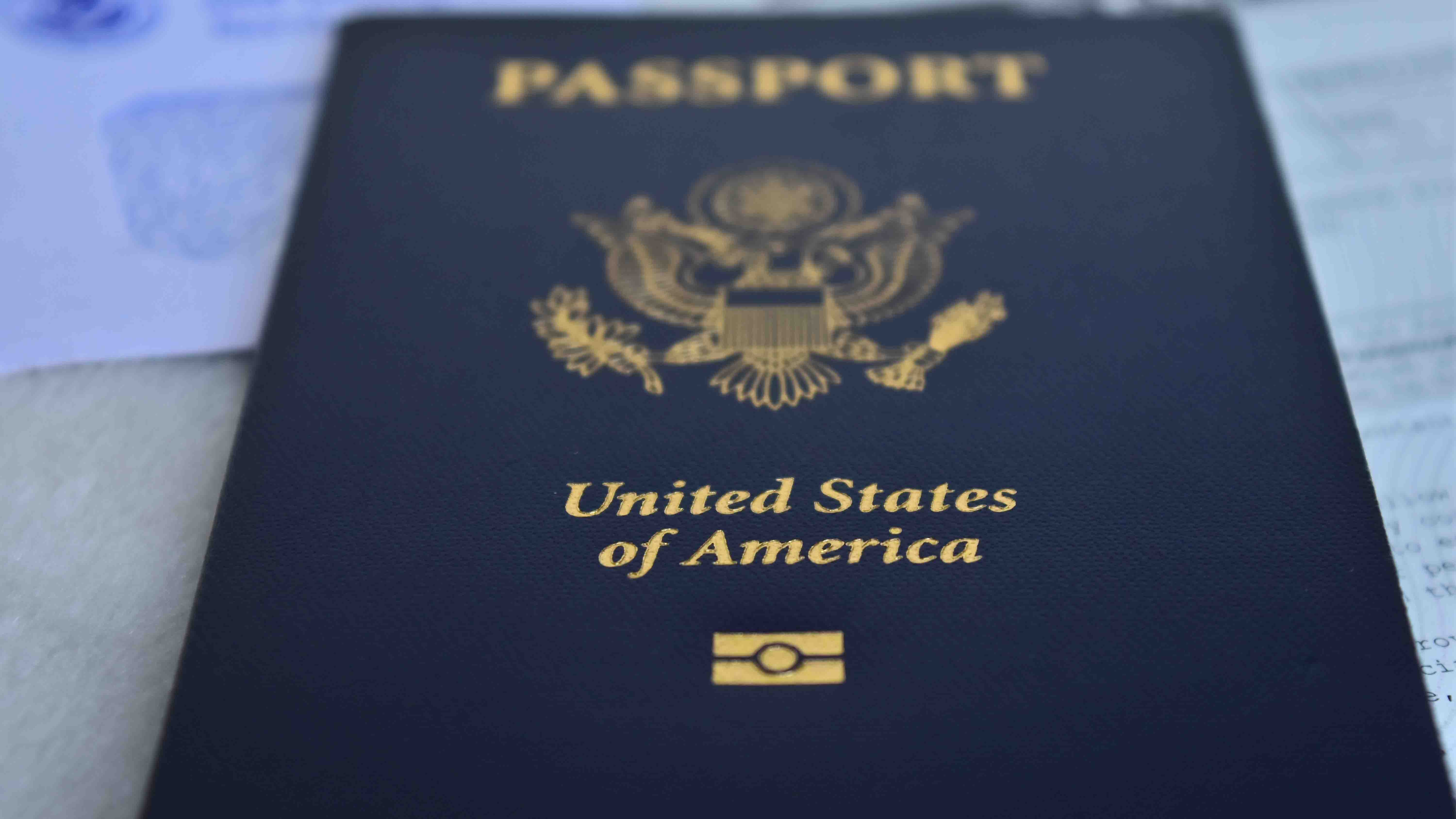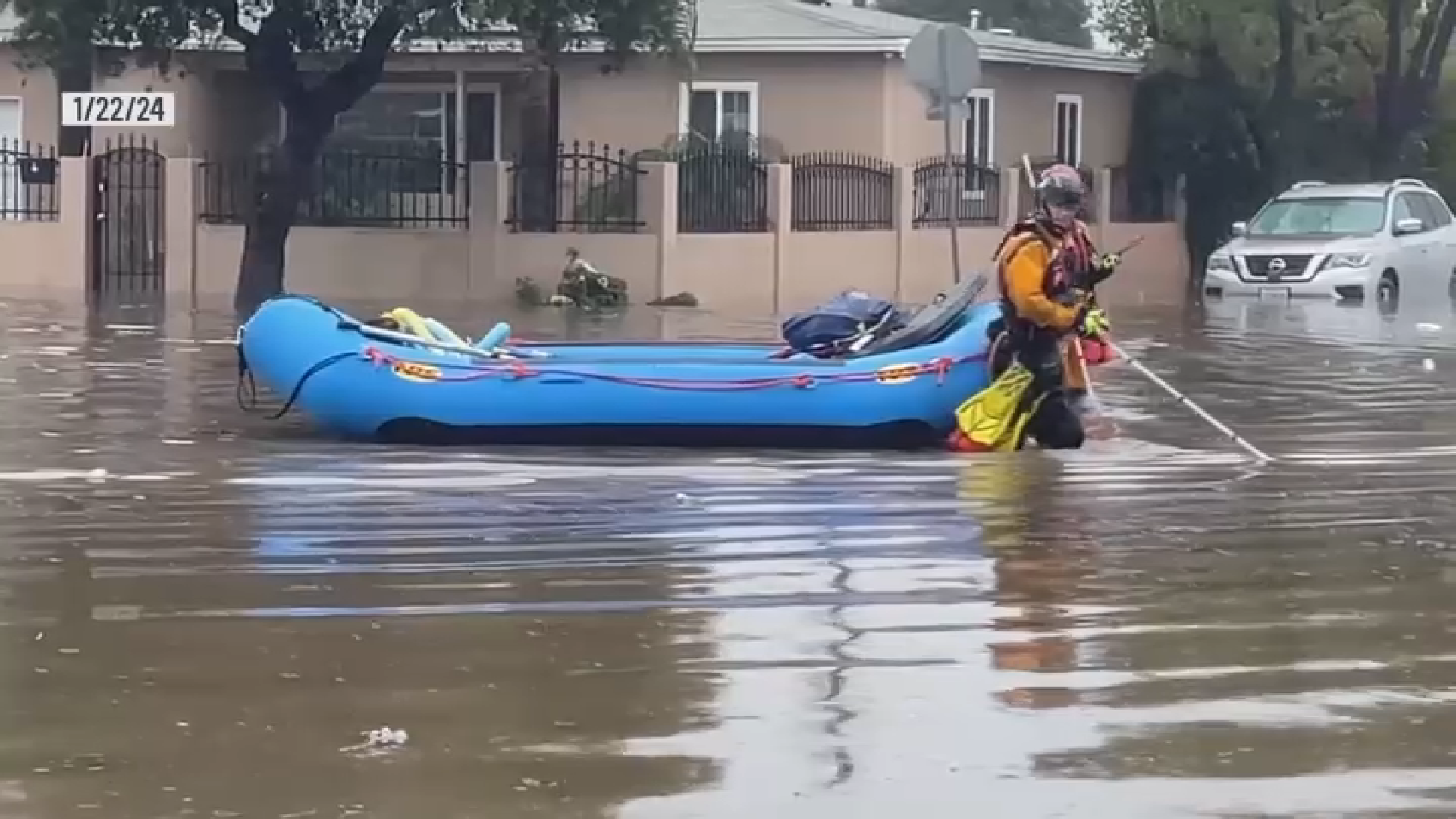San Diegans affected by January's so-called "thousand-year storm" are nearing the deadline to get help from the federal government.
After the White House declared the flooding in San Diego on Jan. 22 a major disaster, FEMA stepped in to get the more than 1,200 residents forced from their homes the assistance they desperately needed. But the window to apply for aid will soon close, and those who don't take the necessary steps by the April 19 deadline could be left on their own.
San Diego's January Floods
Here's what San Diegans should know about the federal assistance:
Get top local stories in San Diego delivered to you every morning. Sign up for NBC San Diego's News Headlines newsletter.
How can flood victims apply for FEMA assistance?
The FEMA app is a one-stop shop for victims to register for assistance, or click here for a desktop link or call 800-621-3362.
What information is FEMA going to ask for when registering?
- A current phone number victims can be contacted
- Address of the damaged primary residence
- Social Security number
- A general list of damages and losses
- Current telephone number
- Information about insurance coverage
- Bank account and routing numbers for direct deposit of funds
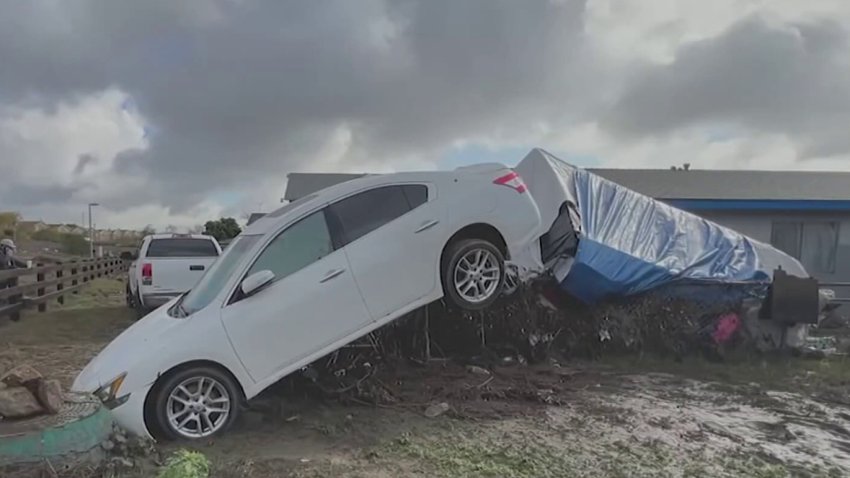
It's good to have as much documentation as possible, FEMA's external affairs officer Brady Penn told NBC 7 on Wednesday.
"So we do want people to continue to document their damages, take photos, save receipts, things along those lines," Penn said. "Every case is going to be different, depending on what assistance you are registering for, the process and the verification process will look different."
What assistance is available to people who register with FEMA?
- Temporary housing
- Essential home repairs
- Uninsured and underinsured personal property losses
- Other serious disaster-related needs not covered by insurance
Does FEMA have people in San Diego now?
Staffers arrived in force after President Joe Biden acknowledged its disaster status. A disaster recovery center was opened but will also close Friday.
Two Federal Emergency Management Agency Disaster Recovery Centers opened on March 1 to help flood victims.
The centers are located at the:
- Spring Valley County Library, 836 Kempton St., Spring Valley; and
- Mountain View Community Center, 641 South Boundary St., San Diego.
They will operate from 10 a.m. to 7 p.m. seven days a week until April 19. Residents impacted by the storms can register with FEMA for federal assistance and disaster loans.
How much aid can flood victims get from FEMA?
While FEMA is here to administer multiple individual-assistance programs, there is a cap on financial aid of $42,500 per household. That umbrella payment would cover housing assistance, property loss and home repairs.
"FEMA individual household assistance will be able to provide grants for things like home repairs," Penn said. "I think that that's often, particularly in a flooding event such as this — you know, a lot of people lost a great deal of personal items, have a great deal of damage to their homes: Individual assistance will be able to help reimburse for some of those costs. Personal items, including potentially personal vehicle, if it's your primary vehicle — often, grants are available for that as well. And then, even renters are able to get some assistance if they had damages to personal items or vehicles and things like that as well."
What is Critical Needs Assistance?
The agency has something called critical needs assistance, currently $750, that survivors can potentially use for whatever they need right after a disaster: baby formula or food, for example. States have to specifically request that category of assistance, which California may not have done. Victims still have to apply, and there is some vetting to prevent fraud.
Critical Need Assistance was not initially offered to San Diegans by FEMA.
Do flooding victims have to apply for a loan from the Small Business Administration?
Some disaster survivors, despite not owning or operating businesses, have to apply for a loan with the Small Business Administration, Penn said
"The first step for folks, after checking with their insurance and checking on their insurance coverage, is to proceed to register with FEMA," Penn said, "and on a case-by-case basis, they may be directed to apply with the Small Business Administration or they may proceed with FEMA."
This step of applying to the SBA, which will be done away with under new guidelines beginning March 24, determines if recipients get low-interest loans for rebuilding if they qualify.
"Disaster loans up to $500,000 are available to homeowners to repair or replace damaged or destroyed real estate," according to the SBA. "Homeowners and renters are eligible for up to $100,000 to repair or replace damaged or destroyed personal property, including personal vehicles."
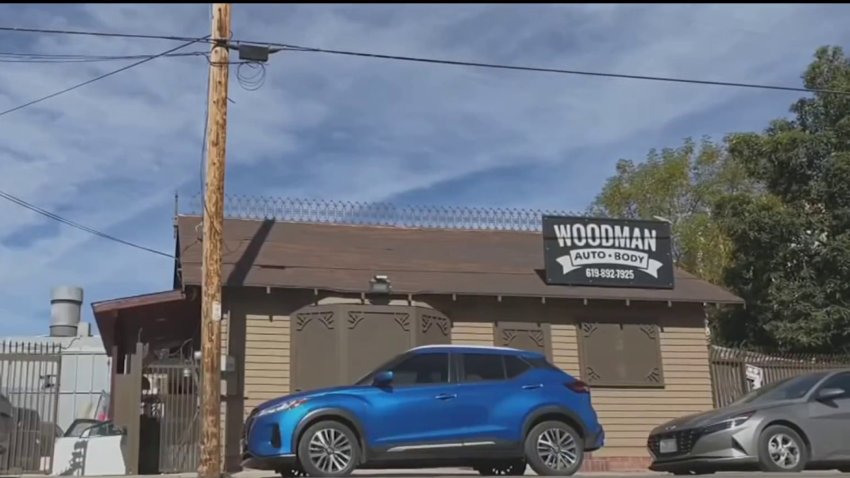
Business owners can, of course, also apply for a loan of up to $2 million to repair or replace damaged or destroyed property, equipment, inventory, and other business assets, the county said. Interest on SBA disaster loans will not accrue until 12 months from the date of the first disbursement.
The Small Business Administration will be opening a Business Recovery Center in National City on Feb. 26. The center will be set up at the Southwestern College Higher Education Center located at 880 National City Blvd. National City.
The Business Recovery Center will be open Monday through Friday from 8:30 a.m. to 5 p.m. through April 19 and appointments are not necessary.
Do people get any housing assistance from FEMA?
Housing assistance is provided to individuals registering with FEMA on a case-by-case basis, and in some cases may involve retroactive reimbursement. Penn, who said FEMA trailers would not be coming to San Diego to house victims, stressed the need to document expenses. Caveat: Whatever financial assistance is provided by FEMA is part of the $42,500 cap, not in addition to it.
How long will people have to wait for financial assistance from FEMA?
Victims who don't have to apply for the SBA loan and who are able to get through all the paperwork correctly the first time could see money drop into their bank accounts within weeks of registering with FEMA, Penn said. Registration should only take about 20-30 minutes, according to him. After that, an inspection is performed within 7-10 business days, then most people should receive a determination letter shortly afterward.
Even if the paperwork was done right, there may still be delays, however.
"But depending on the case, there may be more documentation required, there may be further inspections required, or it's possible that it'll be determined that the Small Business Administration is a better fit, in some cases," Penn said.
If their assistance request is approved and they provided their direct-deposit information correctly, a FEMA grant could be deposited into their bank accounts a few days after they receive their determination letter.
Applicants need to carefully read all communications from FEMA, Penn stressed, especially the determination letter.
"A lot of people receive a determination letter and are confused, basically confuse it for a rejection letter or something like that," Penn said. "It's actually, a lot of times, something that additional paperwork or additional documentation is needed."
Why was I deemed ineligible?
There are several reasons why your application may have been denied. The first step is to determine why. Here are some of the most common reasons.
FEMA couldn't contact you
FEMA must conduct a home inspection after you have applied for assistance. Some may not have answered the call because they can come from unknown numbers. But you'll want to answer, FEMA said in a news release.
"If you have missed the calls and messages, call the FEMA Helpline at 800-621-3362 daily 7 a.m. – 10 p.m. to update your information and let us know that you still need assistance," FEMA said.
FEMA didn't have enough information
FEMA needs the following items in order for a claim to go through:
- proof of insurance coverage
- a copy of an insurance claim settlement document
- proof of identity
- proof of occupancy
- proof of ownership
- proof that the damaged property was your primary residence during the disaster.
You told FEMA you don't want to move while repairs are being made
"We won’t be able to offer financial assistance to relocate. If your situation changes, contact FEMA to update your application," FEMA said.
Renters who are forced to move as their landlords make repairs can contact the FEMA Helpline at 800-621-3362 daily 7 a.m. – 10 p.m.and update your status. You may be eligible for assistance.
FEMA deemed the claim ineligible
FEMA may have also deemed someone ineligible because their home was safe to live in or the damage was not determined to be caused by the storm from Jan. 21-23.
"FEMA housing assistance can only return your home to a safe, sanitary and functional condition. Damage to non-essential areas, like landscaping is not covered by FEMA assistance," the agency said.
If you were denied FEMA assistance, you may be able to appeal the decision.
If you believe your home or personal belongings had more damage than an inspector reported, you can submit an appeal letter. The letter should include either a contractor, mechanic or, local official's statement or estimate of the damage. You can also use receipts that show the expenses caused by the disaster.
New FEMA guidelines too late for San Diego flooding victims
Sadly for San Diegans affected by flooding in January, the agency's new streamlined guidelines — the first in 20 years — will not go into effect until March 24 and will only apply to disasters that occur after then.
Under previous rules, homeowners who received payments from their insurance company for home repairs that were not enough to cover all of the damage were essentially out of luck when it came to getting help from FEMA. After March 24, those homeowners can apply to FEMA for help. Deanne Criswell, who heads the Federal Emergency Management Agency, gave an example of a homeowner who has $80,000 in damage but receives only $45,000 from the insurance company. Previously, FEMA couldn’t help them because their insurance payout already exceeded the agency’s assistance cap of $42,500 per disaster. Now, homeowners can get money from the agency to make up the difference. This rule change comes at a time when homeowners in places like Louisiana, Florida and California are facing skyrocketing deductibles and fights with insurance companies over damage assessments that have made it difficult even for people with insurance to recover from hurricanes or wildfires.
Also new: Anytime a disaster is declared that includes FEMA’s individual assistance funding stream, $750 critical assistance payments will be available. A vetting process will occur to prevent fraud. Not every disaster will include these payments. Many declared disasters are more limited in scope.

